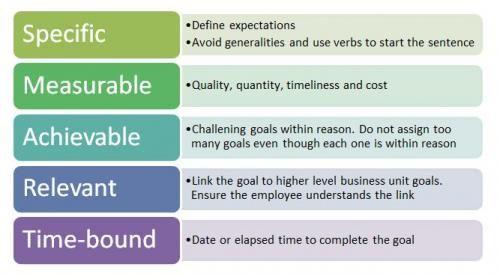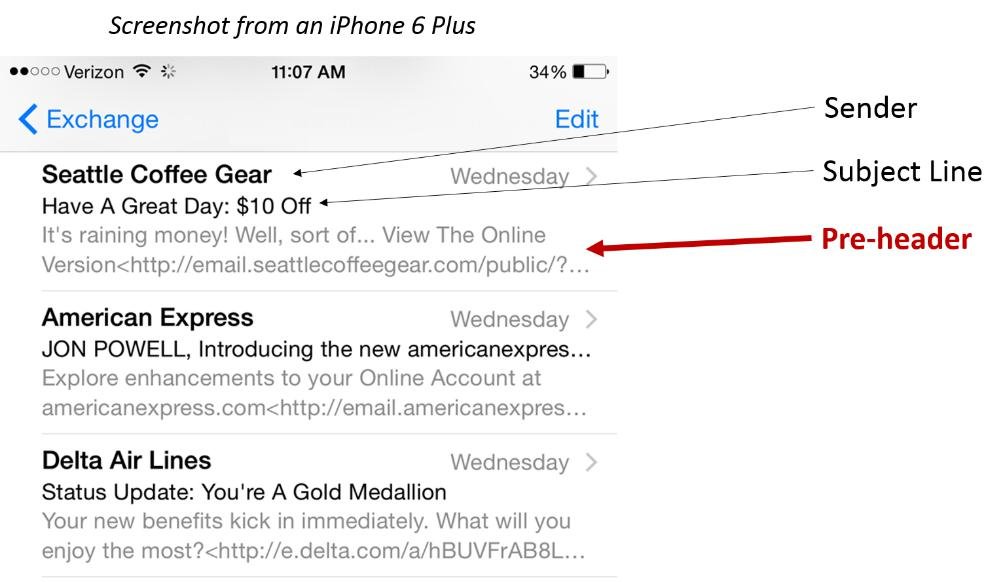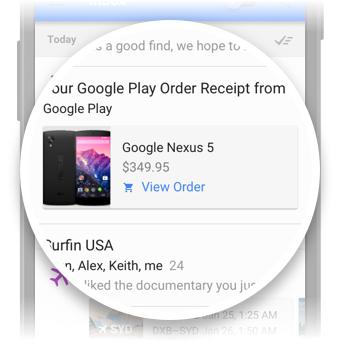If you’re having doubts if email marketing is still effective in generating revenue for your business, the answer is a strong and loud YES!
Email marketing is still one of the main channels to reach and engage with customers.
According to Statista, there are 3.9 billion email users in 2019 and is set to grow to 4.4 billion in 2023.
With the increasing number of email users, it is safe to say that email marketing is neither slowing down nor dying. On the other hand, with roughly 281 billion emails sent every day, there’s a lot of competition for your audience’s attention.
So how do you create an effective email marketing campaign in 2020 and beyond? Here’s a six-step strategy model for high-converting emails.
1- Define Your Goals
This is a crucial step in creating your email marketing campaign, or any campaign for that matter.
Your goals will determine the success of your campaign.
Without clear objectives, there won’t be anything to measure, and without anything to measure, there’s no way of knowing if your efforts are successful. Your goals will also serve as a guide in the direction of your email marketing campaign.
To clearly define your campaign goals, follow the ‘SMART’ framework, which stands for Specific, Measurable, Attainable, Relevant, and Time-bound.

- Specific. Be as specific as possible in defining what you want to achieve. Instead of just saying “I want to increase my email conversion rate,” a specific goal might be “I want to increase my email conversion rate by 10% within the next three months.”
- Measurable. Having a measurable goal means quantifying it so you can track your progress. Let’s say you want to increase your subscriber list growth rate. You should determine how many additional subscribers you want. With a specific number in mind, you can use your key performance indicators (KPIs) like open rate, bounce rate, clickthrough rate, etc. to evaluate which areas you need to improve in your campaign in order to reach your target.
- Attainable. Consider where you are at your business and set a realistic goal. Do you have the right resources to achieve it? Can it be done within the given time? Have others successfully done it before?
- Relevant. Every goal you set for your email marketing campaign should gear towards the growth of your overall business. Asking yourself the impact of a goal on your business. This is important because if it doesn’t push you forward, all your efforts will be pointless. For instance, a goal to reach a 5,000 subscribers list count without a target audience wouldn’t be beneficial for your business, because people who will receive your emails might not even be interested in what you offer.
- Time-bound. You need to set a deadline to accomplish your goal. This will help you to focus and work on your goal because you aim to achieve it within a given timeframe.
2- Choose the Right ESP
You need to choose an email service provider (ESP) that has the services and functions that you need. Choosing the right ESP will help in increasing your deliverability rate & ROI.
Here are some factors that you need to consider when choosing an ESP:
- Cost. Look for a plan that has the functionality that you need while keeping your cost low, don’t buy an expensive plan if you currently don’t need the extra features. An email service provider’s pricing will vary according to the size of your list. Think long term to avoid future costs of switching to another ESP.
- Deliverability. This is one of the main concerns in email marketing. People are taking adequate steps to save more on internet safety. When selecting a vendor, ask their deliverability rate and their ability to keep it high. Are they flexible to allow third-party deliverability audit or do they provide it? How’s their sending reputation? Do they provide a dedicated IP? Although your ESP is not solely responsible for the deliverability of your emails, it will play a major role in determining your campaign’s success by protecting your IP’s reputation.
- Tools and features. Don’t give too much focus on what an ESP offers; instead, focus on what you need. Some tools and features you might want to look at are its templates, tracking, automation, compatibility, split-testing capabilities, integrations, and customer support.
- Templates. If you don’t have any knowledge of HTML in email, it would be best to select an ESP that has drag and drop options for building emails, with good designs and flexible layouts. Users are leaning to visuals, and a good-looking email can make a big difference to a highly converting email.
- Tracking. Check if the ESP you’re considering provides the tools and statistics to measure your email marketing campaign. Some of the basic metrics you need are delivered emails, bounces, opens, and clicks.
- Compatibility. Make sure that the service provider you choose can integrate with the other apps you use. For instance, if you’re running an e-commerce business, make sure that it’s compatible with your platform and analytics tools.
- Split-testing capabilities. One of the most important analytics for an email marketing campaign is split-testing. This will help you to understand your audience and optimize your email performance. If you have a list that allows you to test more than two versions, you might want to consider an ESP that supports automated multivariate experiments.
- Customer support. With goals and KPIs to hit, you want to support as quickly as possible whenever you need them. Check your vendor’s support response time on their service-level agreement. A good ESP provides 24/7 support via live chat, email, and phone.
3- Research Your Target Market
Market research is an integral part of your campaign. You can’t just write and send any emails without understanding your audience’s needs and wants.
Market research will help you write emails that resonate with your target market, increasing conversions and ROI.
One way to gather data is by conducting a survey among members of your list. This will not only allow you to know the struggles of your buyers but also help with segmentation.
Identify keywords that your target market use to help you dial in their language and use it for your email copy. Take a look at this short email from Netflix where they ask for customer feedback.

Digital marketers are constantly learning how to leverage consumer data in driving sales and traffic on businesses. By analyzing your buyer’s behavior and interests, you can create an effective strategy for your email marketing campaign.
For example, referencing the “recently viewed items” in your online store gives you a chance to contact your subscribers who were browsing some products but are yet to make a purchase. Sigma Beauty does this perfectly.

4- Keep up with the Trends
Here’s a list of email marketing trends that will lead to high conversion in 2020 and beyond:
- Data science and AI. We already mentioned the significance of data science and AI in the modern age of marketing. Around 1.7 megabytes of data will be generated every second for everyone on the planet by 2020 as cited by Maryville University. With data science and AI, you can segment consumers and allow them to receive personalized and relevant email marketing campaigns that are tailored to their preferences.
- Automation. Almost all ESPs today offer automation. It’s important to send your emails at the right time and to the right people. Automated emails allow you to schedule sending of emails and automatically send emails when trigger responses are made.

- Personalized emails with discounts. Email personalization will continue to grow as consumers want company brands to speak directly to them. And with personalized discounts, not only will you be able to enhance your subscriber’s overall experience with your emails but also help increase brand affinity through engagement. It not only allows you to stand out in your subscriber’s inbox but also helps in increasing clickthrough rates drastically. If your list is properly segmented, a touch of personalization will boost your engagement metrics.
- Mobile optimization. One 2019 study showed that 61.9% of all emails are opened through mobile devices. This is projected to increase in 2020 and the following years as digital content are continued to be optimized for mobile. Use designs and layouts that are mobile-friendly. Shorten your subject line and write a compelling preheader. You don’t want your emails looking good on desktop but a mess on mobile devices.
- Integrate social media and email. Take advantage of different marketing channels. Invite your email subscribers to connect with you on social media and vice versa to increase customer reach and brand engagement.
5- Increase Open Rates
A good email copy is useless if it’s not read by your receiver. If you want to have high converting emails, you need to have a high open-rate.
Start with a killer subject line. Good subject lines may include elements like personalization, urgency or scarcity, and curiosity. It should be short and must align with your email copy.
Although there are words that would entice your subscribers to open your email, you have to be careful of what you put on your subject line as it may land on your subscriber’s spam folder.
Avoid using all caps, characters like “$” and multiple exclamation points. These are just a few of spam triggering words you need to avoid:
- Free
- Price
- Earn
- Best
- 100%
- Bonus
- Cash
Another way to boost your open rate is by writing a preheader, also called email preview text. This is the short line of text that appears alongside your subject line in your recipient’s inbox.
You can hide and customize a preheader using HTML or CSS. Look at it as an extension of your subject line, it’s another opportunity for you to get your recipient to open your email.

Use Schema.org email markup. If you haven’t heard of Schema.org, to put it simply, it’s a universal language on webpages that any search engine can understand to make search results more accurate and relevant to users.
While it’s best-known as a game-changer for SEO, using Schema.org markup for emails will also make your emails stand out in a subscriber’s inbox. It allows users to take action straight from the inbox, without having to open the email itself.
There are different types of email markups for articles, flights, reservations, and orders. Here’s an example of an email that uses order reservation markup:

6- Measure And Optimize
Gather the results from your campaign and assess the extent to which you have achieved your goals. Look at the metrics of your email marketing campaign and analyze it.
The basic metrics you might want to analyze are your delivery rates, open rates and clickthrough rates. Which actions lead to more conversions? Identify which part of your campaign poorly performed and optimize.
For example, you’ve noticed a decrease in open rates on a certain email which leads to a poor conversion rate.
You can check and identify which part of this email caused subscribers to ignore it.
Is it your subject line? Your preheader text? This will help you identify which part of your emails you need to improve.
Final Thoughts
Although there are a lot of ways to achieve a successful email marketing campaign, remember these steps to help you create high-converting emails:
- Define your goals
- Choose the right ESP
- Research your target market
- Keep up with the trends
- Increase open rates
- Measure and optimize
Email is a powerful tool to generate leads and drive sales to your business with a great return on investment. With the insights you’ve read in this article, you can now start crafting a high-converting email marketing campaign.
All marketing channels will continue to evolve, so don’t forget to test and figure out strategies that would best work for your business.